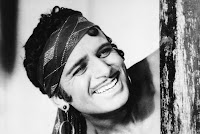1. Detail
the socio historical context in which both Dada and Surrealism were birthed. Namely, if they were reactionary movements or
a means of alternative thinking or transgression, what were some of the ways in
which they challenged ideologies? What did they challenge and why did they challenge it? Were
there particular mediums that were more transgressive than others? Using the earlier texts from the semester,
what kinds of strategies or artistic choices are resonate or indicative of
these challenges? Also, consider what
ideologies Dada and Surrealism perpetuated.
*It is important to understand how literary movements and artists are framed, influenced, motivated, and constructed by the inter-workings of space and time events and how artists/writers/movements likewise [re]construct.
2. In what ways are Oulipo forms indicative of Dada
and Surrealism? In terms of historical
lineage, inheritances, and influence, compare Calvino If On A Winter’s Night
A Traveller and Perec’s A Void with Roussel’s Locus Solus. What are some reoccurring or similar
themes? What do these similarities
suggest? Is there a connection between Oulipian
constraint and the Surrealist project of the unconscious? What
are those connections, if any, and what do they say or not say about the
movement from modernism to
postmodernism?
*I feel we did not have ample enough time to delve into these texts within a larger class discussion, so it would be helpful to further explore Dada, Surrealism, and Oulipo through the texts. Further, making connections between and among texts helps to illustrate cultural consciousness and any theoretical implications.
3. Using the idea of scale from the film “Powers of
Ten,” explore the role of metafiction in the texts we have read this
semester. What are some of the
metanarratives that Dada, Surrealism, Oulipo, and Fluxus addresss? Further, explore how Craig Saper’s ideas of
receivable texts, intimate bureaucracy, fan culture, transactional esthetics,
and sociopoetic forms from Networked Art can be understood in relation
to the works of John Cage and Alfred Jarry’s Ubu Rex.
*Clearly there is a theme here of making connections. As a way of circling back to move forward (did you see what I did there), a comparison across time and in between forms/ideas might generate some larger implications here about these movements. And, working through some of the complicated material from Networked Art might need additional exploration.
















